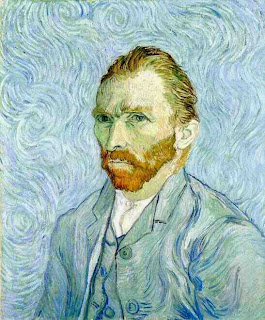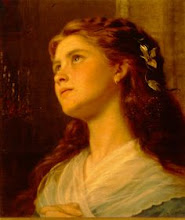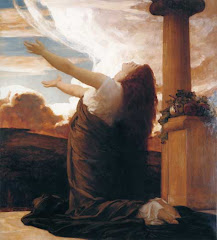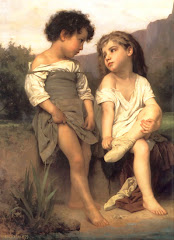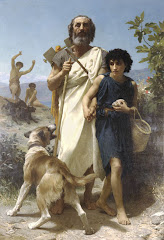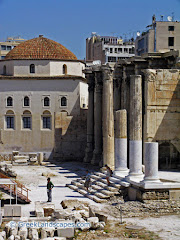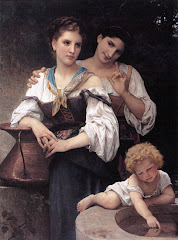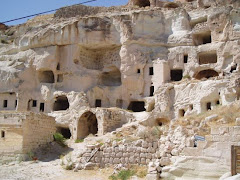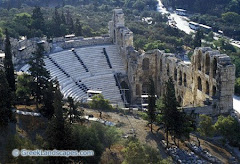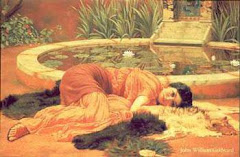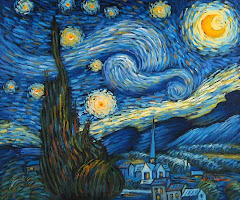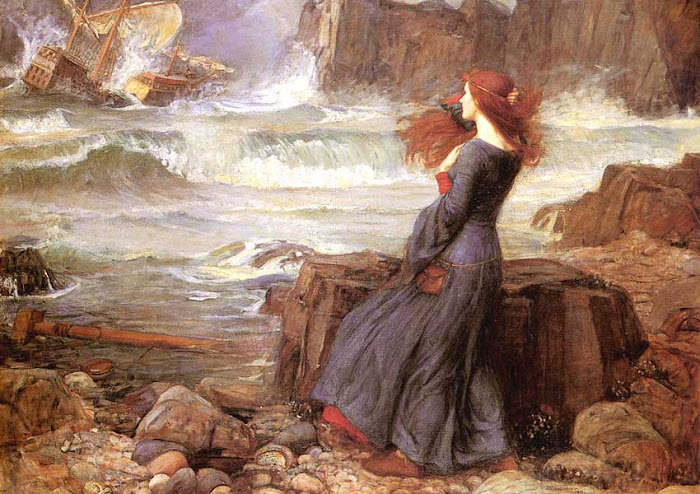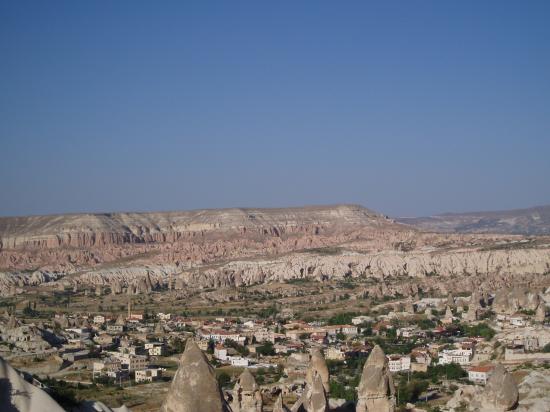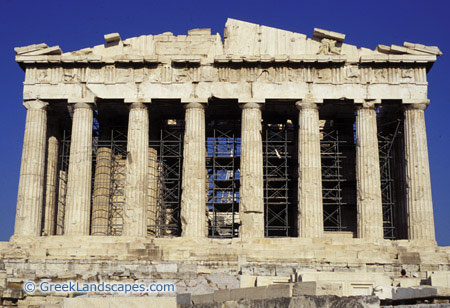Jean-Francois Millet: Self-Portrait
1814-1875
Jean-François Millet was a French painter and one of the founders of the Barbizon School in rural France. Millet is noted for his scenes of peasant farmers; he can be categorized as part of the naturalism and realism movements.
Millet was the first child of Jean-Louis-Nicolas and Aimée-Henriette-Adélaïde Henry Millet, members of the peasant community in the village of Gruchy, in Gréville-Hague (Normandy). Under the guidance of two village priests, Millet acquired a knowledge of Latin and modern authors, before being sent to Cherbourg in 1833 to study with a portrait painter named Paul Dumouchel. By 1835 he was studying full-time with Lucien-Théophile Langlois, a pupil of Baron Gros, in Cherbourg. A stipend provided by Langlois and others enabled Millet to move to Paris in 1837, where he studied at the Ecole des Beaux-Arts with Paul Delaroche. In 1839 his scholarship was terminated, and his first submission to the Salon was rejected
The Sower by Jean-Francois Millet
Millet's 1850 piece "The Sower", which has come to be associated with the Social Realist movement, shows a peasant man striding through a plot of freshly tilled soil as he sows his crops. The sun shines in the top half of the painting just over the horizon to show that the peasant has risen at the crack of dawn in order to accomplish the day's work that lies ahead.
The painting is characterized as a Social Realist work because of its focus and subject matter, and additionally due to the manner in which the work is portrayed. Millet breaks from the traditional academic route with "The Sower" and it shows in his dark and muddy earth tones. Rather than idealizing the peasant man or ignoring him entirely, Millet portrays the peasant as a stocky, well-built young man wearing simple, practical peasant clothing.
An impasto brush stroke gives "The Sower" an aura of liberation from academic traditions. Millet balances the earthy lower portion of "The Sower" with a sunset over the horizon in the top of the painting, giving the work the simplicity of a peasant's day. The peasant portrayed has his face hidden by the front of his hat, and is presumably looking off into the distance, at the work that is left to be done in front of him.
The Gleaners by Jean-Francois Millet
Gleaners, or the women who scavenge for the stray ears of corn left by the harvesters, had appeared in several of Millet's drawings, but the first oil painting on the theme was one of a set of four representing the seasons. The painting, Summer, The Gleaners (1853, Private Collection) has an identical composition to The British Museum's drawing, shown here. This drawing may have immediately preceded the painting, but more likely was drawn from it, as Millet frequently repeated and recorded his favorite motifs. Millet was an important influence on later artists, including Van Gogh, who made copies of several of Millet's works.
The Potato Planters 1861 by Jean-Francois Millet
The disparity between the apparent value of the painting and the poor estate of Millet's surviving family was a major impetus in the invention of the droit de suite, intended to compensate artists or their heirs when works are resold. Despite mixed reviews of the paintings he exhibited at the Salon, Millet's reputation and success grew through the 1860's. At the beginning of the decade he contracted to paint 25 works in return for a monthly stipend for the next three years, and in 1865 another patron, Emile Gavet, began commissioning pastels for a collection that would eventually include 90 works. In 1867 the Exposition Universelle hosted a major showing of his work, with the 'Gleaners', 'Angelus', and 'Potato Planters' among the paintings exhibited. The following year Frédéric Hartmann commissioned 'Four Seasons' for 25,000 francs, and Millet was named Chevalier de la Légion d'Honneur.
Jean François Millet's "The Angelus"
Millet's work is distinguished by an absolute truthfulness to Nature which was the guiding principle of his life. He saw the peasant bent at his work in the fields, and he pictured him in all his gaunt poverty and weariness, while he invested him, by his inspired vision, with the symbolic dignity of labor. Thus, in painting life, Millet reveals the sublime in the commonplace, the promise hidden in the pain, and the mercy that hovers over sorrow.
"The Angelus" completes a series of three pictures by Millet which are considered his masterpieces. "The Sowers" typifies the laborer going forth bearing good seed with him "The Gleaners" shows the end of the harvest which has supplied the people's wants and left something over for the needy. "The Angelus" depicts the laborers' thanks for the gift of plenty.
The last picture is the most popular of all the works of this artist, and it expresses in full measure the simplicity and devoutness of his nature. His wish was to make the spectator realize the vesper hour, when the soft chimes call the toiler to thankful rest. The man and the woman have worked well, as their full sacks bear witness, and they are bending their heads in gratitude to their Creator for His gifts. On a small canvas, twenty-five inches long and twenty-one inches high, the painter has created a scene that is at once a prayer and an inspiration, which will hold its strong appeal as long as the colors last.
Woman Baking Bread by Jean-Francois Millet
Millet's modest background had a great influence on the subject matter of his works. "I was born as a peasant and shall die as a peasant", Millet once said (although, after achieving success, Millet did learn to appreciate a more comfortable life). Millet's works are a nostalgic tribute to farmers and laborers. He felt great compassion for people who worked the soil with their own hands--it is here that Van Gogh and Millet connect.
Van Gogh began doing studies after Millet works as early as 1880. These early studies helped Van Gogh to learn the disciplines necessary in order to paint. Van Gogh felt that no one could offer him a finer example:
"Millet is father Millet . . . counselor and mentor in everything for young artists," Vincent wrote to Theo in 1885.
The Winnower by Jean-Francois Millet
Millet's early works were modeled on eighteenth-century pastorals, but during the 1840's the influence of Daumier encouraged him to paint in a more vigorous and sober style. 'His Winnower of 1848' set the seal on this new direction.
The painting was exhibited at the Salon of 1848.
The Woodsawyers by Jean-Francois Millet
This is a very dynamic image: the bodies of the workers are sharply bent towards different, sometimes opposing directions, creating a swirling rhythm that dominates the scene completely. Labor - the activity of logging - becomes the protagonist; faces are covered to let the bodily movements speak. The three men form a triangle that serves as an abstract geometrical formula for the sweaty dance they perform. Every part of the body engages in the process. The leg muscles of the central figure are bulging, the shoulders and the back of the man on the left are fully engaged and the torso of the farthest logger is strained to the maximum. The giant trees further emphasize the energy involved in their cutting; they are formidable opponents and give in slowly and without the enthusiasm of the men. The monumental struggle between the two sides reveals the hardships of this livelihood, but also marks it as aesthetically and symbolically meaningful. A sense of pride and self-respect hovers above these hard workers.
Jean-Francois Millet | Art & Critique
Shepherdess With Her Flock by Jean-Francois Millet
Calm, serenity and harmony triumph in this painting. Wearing a woolen cape and a red hood, the young shepherdess (perhaps the painter's own daughter) is standing in front of her flock. She is knitting, looking down at her work. In a monotonous landscape stretching, unbroken, to the horizon, she is alone with her animals. The flock forms a patch of undulating light, reflecting the rays of the setting sun. The scene is an admirable mixture of accuracy and melancholy. Millet observed the minutest details, like the small flowers in the foreground. He makes use of the perfect harmony of blues, reds and golds.
Since 1862, Millet had been thinking about a picture of a shepherdess guarding her sheep. He didn't tell anyone about it, but Alfred Sensier recounts that the theme "had taken hold of him".
The Hay Trussers 1850-1851 by Jean-Francois Millet
After 1848, Millet devoted himself to genre scenes glorifying the family life of the hard-working farmer population, whom he observed in the region of Barbizon. The thematic simplicity of these pictures does not belong to the anecdotal vein of genre painting. Millet paints the grandeur and dignity of peasants with thick, expressive and liberal brushwork.
The painting was exhibited at the Salon of 1850.
A C K N O W L E D G E M E N T
Pictures and texts











